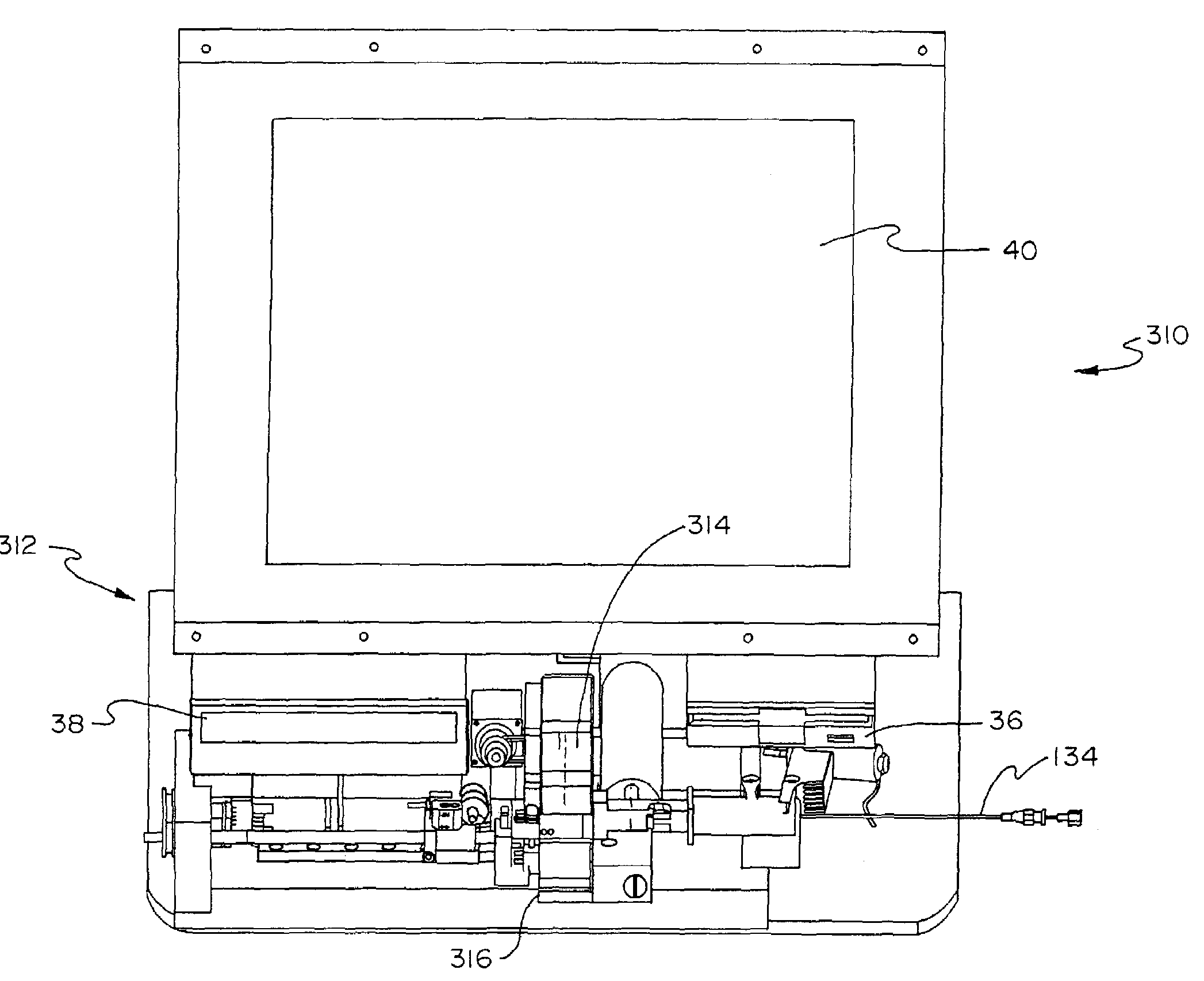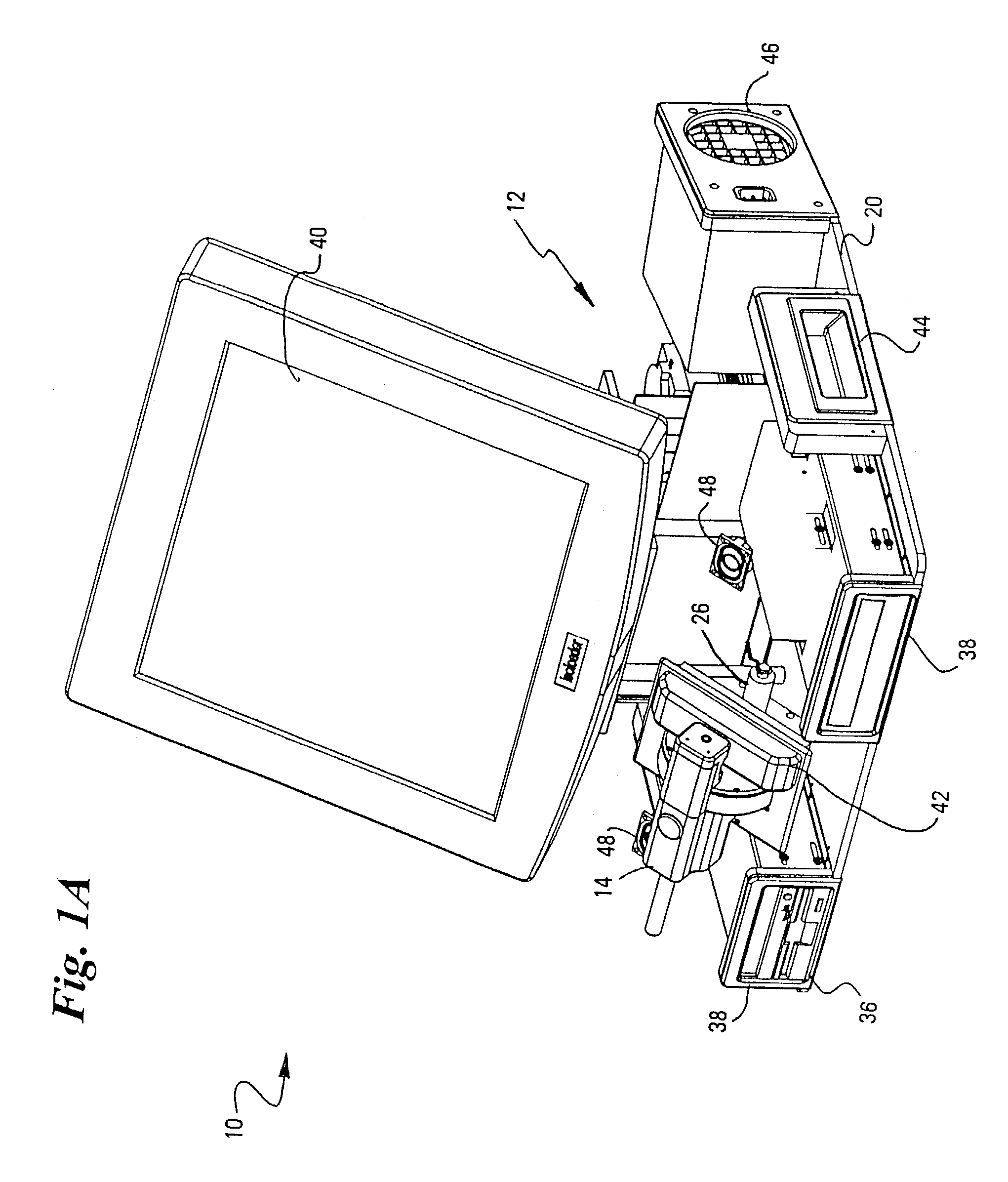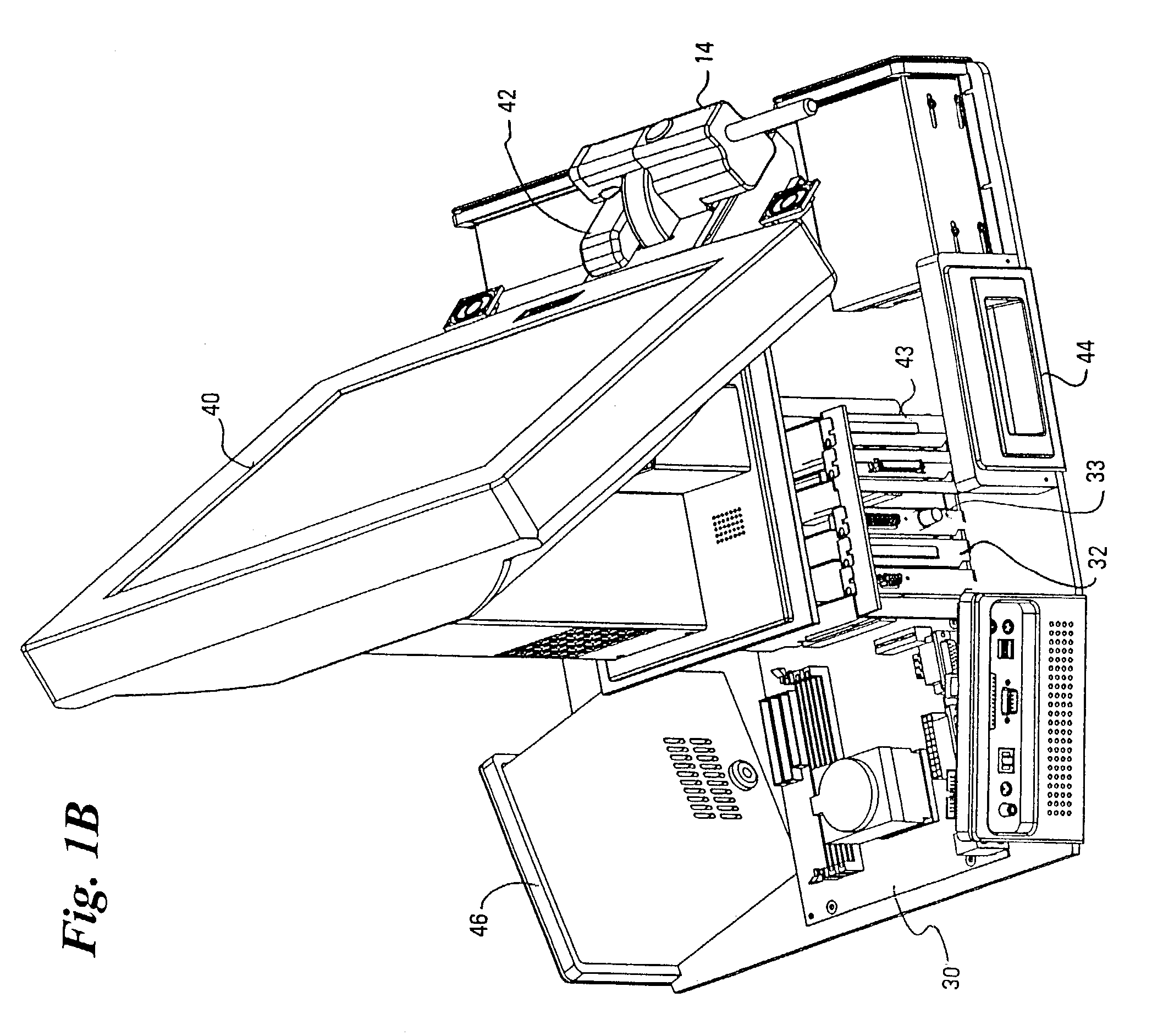Automated radioisotope seed loader system for implant needles
- Summary
- Abstract
- Description
- Claims
- Application Information
AI Technical Summary
Benefits of technology
Problems solved by technology
Method used
Image
Examples
Embodiment Construction
[0032]Referring to FIG. 1, an automated system 10 for loading low dose radioisotope seeds into a plurality of implant needles is comprised of a loading station 12 into which a replaceable cartridge 14 may be positioned. Preferably, the loading station 12 includes structure defining a cartridge receiving structure 16 in a front side of the loading station oriented toward a user as shown in FIG. 2. In this embodiment, the loading station 12 presents a front side toward a user with a corresponding longer dimension of the replaceable cartridge positioned in the cartridge receiving structure 16 parallel to this front side. Alternatively, the cartridge 14 and cartridge receiving structure 16 could be oriented transverse to the front side of loading station 12 or even at a rear side of loading station 12.
[0033]The loading station 12 has a base 20 (as shown in FIG. 1) and a cover 22 (as shown in FIG. 2) preferably formed of molded plastic or metal. A computer processor 30 for the automated ...
PUM
 Login to View More
Login to View More Abstract
Description
Claims
Application Information
 Login to View More
Login to View More - R&D
- Intellectual Property
- Life Sciences
- Materials
- Tech Scout
- Unparalleled Data Quality
- Higher Quality Content
- 60% Fewer Hallucinations
Browse by: Latest US Patents, China's latest patents, Technical Efficacy Thesaurus, Application Domain, Technology Topic, Popular Technical Reports.
© 2025 PatSnap. All rights reserved.Legal|Privacy policy|Modern Slavery Act Transparency Statement|Sitemap|About US| Contact US: help@patsnap.com



